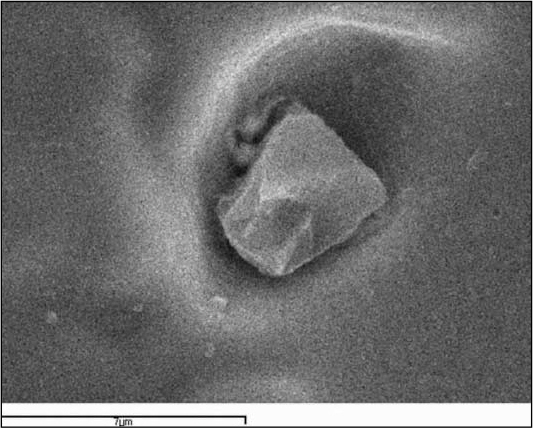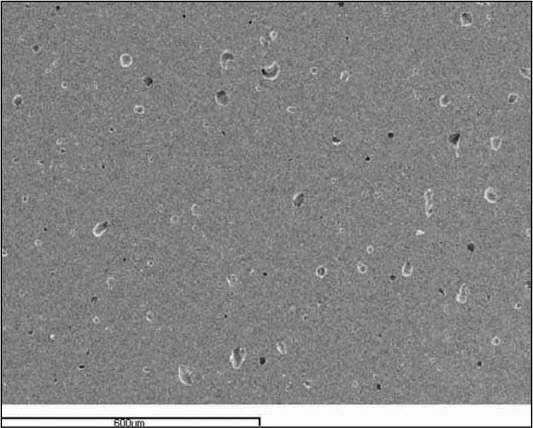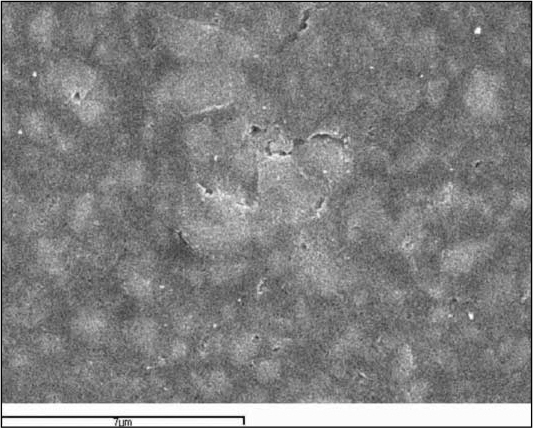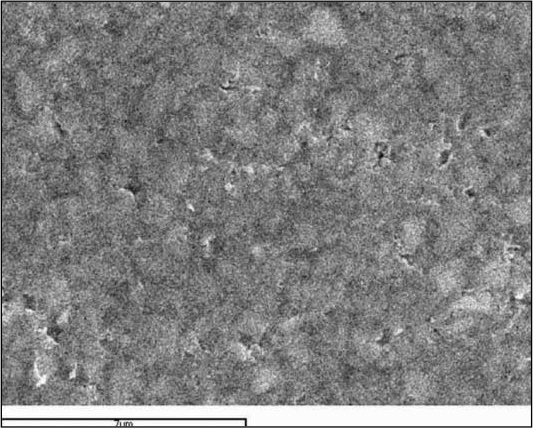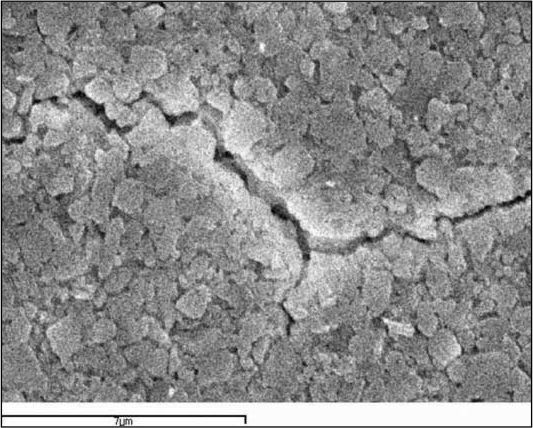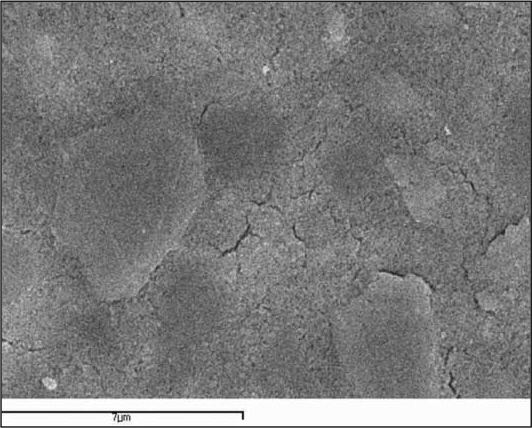J Korean Acad Prosthodont.
2008 Dec;46(6):577-585.
The color stability of aesthetic restorative materials resulting from accelerated aging
- Affiliations
-
- 1Department of Prothodontics, Korea University Medical Center, Korea University, Seoul, Korea. koprosth@unitel.co.kr
Abstract
-
STATEMENT OF PROBLEM: The discoloration of anterior teeth restoration is one of the material problems demanding retreatment.
OBJECTIVES
To evaluate the color stability and affecting factors on esthetic restorative materials when subjected to accelerated aging. MATERIAL AND METHODS: This study was conducted using porcelain disks (IPS Empress 2-glazed, IPS Empress 2-polished), direct restorative resin disks (SYNERGY Duo) and indirect restorative resin disks (Sinfony, TESCERA ATL). Accelerated aging was done by precipitating the specimens in 38 degrees C distilled water and irradiating with xenon light, and the total irradiation was 397.98 KJ/mm. Color and microhardness change of the specimens were measured before accelerated aging and after 100 hours, 200 hours and 300 hours of accelerated aging, and Surface of the specimens were examined with SEM before and after 300 hours of accelerated aging.
RESULTS
1. After 300 hours' accelerated aging, a delta E value was 3.3 or lower in IPS Empress 2-glazed, IPS Empress 2-polished and Sinfony. 2. After 300 hours' accelerated aging, gloss was lost and surface changes including microcracks were observed in TESCERA ATL and SYNERGY Duo, and color changes of them ranged between 3.58 and 6.40 delta E units. 3. During 300 hours' accelerated aging, the microhardness of surface was increased by 3.21 - 19.64 percent in all kinds of composites resin.
CONCLUSION
After 300 hours' accelerated aging, SEM images IPS Empress 2-glazed, IPS Empress 2-polished and Sinfony showed little morphological change and their color changes were considered to be clinically acceptable. And there was significant correlation between microhardness changes and color changes of composites (P < .05).
Keyword
MeSH Terms
Figure
Reference
-
1.Douglas RD. Color stability of new generation indirect resins for prosthodontic application. J Prosthet Dent. 2000. 83:166–70.2.Kim HJ., Heo SJ., Koak JY., Chang IT. Color stability of current prosthetic composites under accelerated aging and Immersion in a coffee solution. J Korean Acad Prosthodont. 2002. 40:225–35.3.Kim HJ., Kim KJ., Cho HW., Jin TH. The study on the color stability of composite resin. J Korean Acad Prosthodont. 2002. 40:79–87.4.Ruyter IE., Nilner K., Moller B. Color stability of dental composite resin materials for crown and bridge veneers. Dent Mater. 1987. 3:246–51.
Article5.Esquivel JF., Chai J., Wozniak WT. Color stability of low-fusing porcelains for titanium. Int J Prosthodont. 1995. 8:479–85.6.Lee SH., Lee YK., Lim BS., Kim CW. Changes in the translucency and color of laboratory resin composites after thermocycling. J Kor Res Soc Dent Mater. 2003. 30:189–98.7.Um CM., Ruyter IE. Staining of resin-based veneering materials with coffee and tea. Quintessence Int. 1991. 22:377–86.8.Tak HS., Park SJ. Influence of camphoroquinone on the properties of composites. J Kor Acad Conservative Dent. 2001. 26:41–50.9.Horn HR. Practical considerations for composite resins and acid etching. Dent Clin North Am. 1981. 25:365–76.10.Dietschi D., Campanile G., Holz J., Meyer JM. Comparison of the color stability of ten new-generation composites: an in vitro study. Dent Mater. 1994. 10:353–62.
Article11.Chung K., Greener EH. Degree of conversion of seven visible light-cured posterior composites. J Oral Rehabil. 1988. 15:555–60.
Article12.Kim KH., Kwon OS., Kim HG., Baek KC., Um CM., Kwon HC. A study on the degree on conversion of light curing composite resin according to the depth of cure and light curing time. J Kor Acad Conservative Dent. 1997. 22:35–53.13.Kildal KK., Ruyter IE. How different curing methods affect the degree of conversion of resin-based inlay/onlay materials. Acta Odontol Scand. 1994. 52:315–22.
Article14.Powers JM., Fan PL. Erosion of composite resins. J Dent Res. 1980. 59:815–9.
Article15.Powers JM., Fan PL., Raptis CN. Color stability of new composite restorative materials under accelerated aging. J Dent Res. 1980. 59:2071–4.
Article16.Powers JM., Bakus ER., Goldberg AJ. In vitro color changes of posterior composites. Dent Mater. 1988. 4:151–4.
Article17.Rueggeberg FA., Margeson DH. The effect of oxygen inhibition on an unfilled/filled composite system. J Dent Res. 1990. 69:1652–8.
Article18.Oysaed H., Ruyter IE. Water sorption and filler characteristics of composites for use in posterior teeth. J Dent Res. 1986. 65:1315–8.
Article19.Peutzfeldt A. Quantity of remaining double bonds of propanal-containing resins. J Dent Res. 1994. 73:1657–62.
Article20.Stansbury JW. Cyclopolymerizable monomers for use in dental resin composites. J Dent Res. 1990. 69:844–8.
Article21.Wendt SL Jr. The effect of heat used as secondary cure upon the physical properties of three composite resins. II. Wear, hardness, and color stability. Quintessence Int. 1987. 18:351–6.22.Ferracane JL., Condon JR. Post-cure heat treatments for composites: properties and fractography. Dent Mater. 1992. 8:290–5.
Article23.Schulze KA., Marshall SJ., Gansky SA., Marshall GW. Color stability and hardness in dental composites after accelerated aging. Dent Mater. 2003. 19:612–9.
Article
- Full Text Links
- Actions
-
Cited
- CITED
-
- Close
- Share
- Similar articles
-
- Color stability of current prosthetic composites under accelerated aging and Immersion in a coffee solution
- Effect of Accelerated Aging on the Color Stability of Dual-Cured Self-Adhesive Resin Cements
- Comparison of the Surface Properties and Color Stability of Various Aesthetic Restorative Materials Treated with In-Office Tooth Bleaching
- Color Stability of Alkasite Restorative Material: in vitro Studies
- Color stability of the resin cements with accelerated aging

